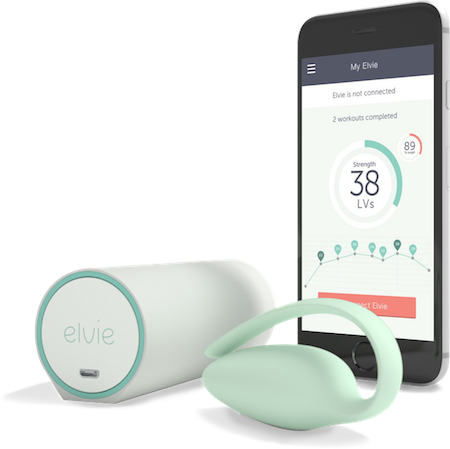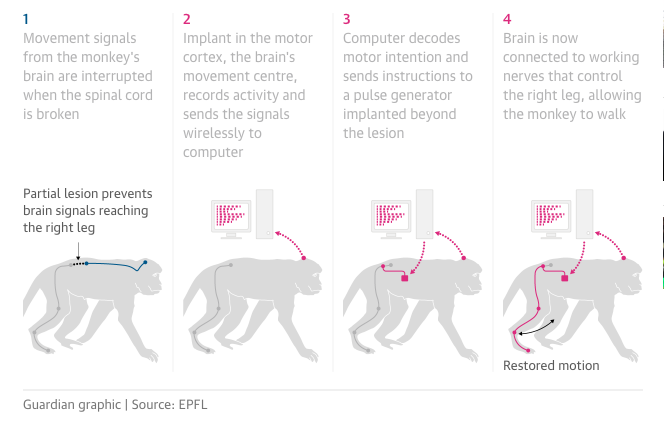
Does Internet of Things bring revolution to healthcare?

Since Internet of Things got its first implementations in healthcare, it immediately drew the attention of medical industries, MDs and patients. Ultrasounds, glucose monitors, thermometers or electrocardiograms are all starting to become connected, enabling patients to track their health, providing them with early prevention and pre-medical care, or collecting data for further medical consultation. Also, med IoT solutions are the chance for solving the struggles of low efficiency and high costs in healthcare.
According to estimates, the investment in medical IoT is expected to reach a staggering $1 trillion by 2025. And, hopefully, it may bring a chance for highly personalised, on-time general healthcare services and the reduction of overall costs for the prevention and management of chronic illnesses.
What exactly will this money be invested in?
The investments include devices monitoring health indicators, auto-administering therapies, or tracking health data in real-time, while a patient self-administers his therapy. IoT solutions are going to be widely used on the stage of monitoring and early prevention as well as healing and fighting the symptoms of illnesses.
What chances does it bring?
How much will IoT transform the healthcare?
We’ll wait and see. But the directions in which healthcare IoT develops are more than promising.
Internet of Things for elder care
Looking after elderly people is really challenging sometimes. Caring for your loved ones usually requires having eyes on the back your head. The concerns are even bigger when the senior lives alone or spends a lot of time with no assistance.
Luckily, elderly care is one of the fields which is facilitated with IoT solutions.
Are you out, thinking about your elderly family member, who stayed home alone?
Thanks to Internet of Things technology you can easily track your relatives, monitor their activity pattern and get alarmed when their behaviour is out of ordinary. It gives you the possibility to react quickly when your loved one is e.g sleepwalking or leaving the house at odd hours. But this is not the end. To prevent elderly people from falling victim to burglars, solutions like Alarm.com Wellness provide compatibility with a home security system, ensuring 24/7 emergency response for the intrusion, fire, and medical emergencies.
Are you concerned about your relative forgetting the prescribed dose of medicines?
That’s nothing unusual: In fact, 1 out of 10 hospital admissions is due to incorrect use of medication. According to estimates, medication errors harm at least 1.5 million patients per year, mostly seniors. So, if you’re looking for a solution that will keep your loved ones away from overdosing, It’s good to consider Medical Dispensing Service by Phillips, which automates the pill-taking process. Actually, Phillips offers the entire line of healthcare life-hacks in its Lifeline series. In the offer, you may find solutions which can automatically call for help when it detects a fall at the house or help doctors manage their at-risk patients between the doctoral visits.
If the problem lies not in how to dose the medicines, but in keeping in mind when to do it you can support your senior relatives’ independence with GlowCap, which reminds them about taking their pills on time and provides the report on their progress.
Internet of Things solutions go much further, providing connected glucometers, ECGs or wearable blood pressure monitors, etc. For seniors, it means a more active role in managing their personal health, higher independence and more effective health condition monitoring.
Improving general condition
There’s also another sort of IoT devices, which main purpose is to stimulate your organism, improve its overall health, strength, and stamina and assist you in your daily activities, in care for your safety. As its target group is pretty vast (athletes, students, blue and white collar workers, diet-eaters, drivers, etc), this category of IoT solutions is one of the most popular and widely applied ones.
If you are fond of sports and want to boost the efficiency of your daily training, you can always give a go e.g to Halo Sport. These smart headphones make training more productive for the brain and let you get better results. How exactly does it work? As you can read in the producer’s web page:
”Halo Sport’s neurostimulation activates the motor cortex, improving the brain’s response to athletic training. When paired with workouts, Halo Sport accelerates gains in strength, explosiveness, endurance, and muscle memory.”
IoT assistance does not end on supporting the active ones. For moments, when you do not necessarily feel like anything, moodables like Thync come with help. They let you elevate your mood and lower your stress, thanks to low-level electrical pulses. Sounds strange? Gentle stimulation of nerves lets you improve your sleep and overall recovery and boosts your vital energy. What’s important, the device is absolutely safe and validated- developed by neuroscientists from MIT, Harvard, and Stanford, Thyc has been tested in a large number of studies using biochemical markers, clinical psychological surveys, as well as state of the art biometric measurements.
Healthcare Internet of Things is not limited to healing what’s already marked in your body, but it also focuses on preventing the negative impact on your health and providing safety in your daily life. This is way easier with devices like Navdy, which uses the military-grade technology for providing safety in cars. What’s the basis of it? According to estimates, one in four car accidents are caused by cellphone-related distractions. So, instead of letting smartphones continue to impair drivers, Navdy proposes a new way to improve road safety. It projects GPS, messages, phone calls, playlists, etc. onto a high-quality, transparent display in front of your face. As Navdy is hands-free, drivers can easily operate it with voice controls and hand gestures, with no need to look away from the road.
Just take a look:
Real-time information
Providing the needed information in real-time is a huge advantage of today’s IoT. This feature is obviously needed also in the field of healthcare, where the on-time information may prevent injuries and health charms.
Thanks to Internet of Things, you can check if your food is really gluten-free (check out Nima, which gives you the results in just 3 minutes!), become a part of air quality sensing network with Air Quality Egg, or even control your physiological needs (see Urosense, a connected bladder volume sensor for suffering from paraplegia or multiple sclerosis).
The possibility of getting a quick check-up wherever you want brings IoT users more independence and self-confidence and improves their life comfort by far. Also, from the perspective of society, Internet of Things solutions may well decrease the number of ambulance interventions and health emergencies.
Pregnancy and childcare
Pregnancy is one of these moments when general care and continuous tracking is not just a convenience, but a must. Things are way easier now when solutions like Belli by Bloom or TinyKicks provide early fetal monitoring and indication of baby’s and mom’s health.
Belli is a small sensor, usually worn discretely under woman’s clothes. It measures the frequency and duration of contractions and automatically counts them. TinyKicks, on the other hand, senses the baby kicks and separates them from mom’s movements. Just imagine how much it can reduce stress and worry for women during pregnancy.
IoT assists parents also further, monitoring their babies while they sleep. Solutions such as Mimobaby, Hello, Beddit or Owlet provide parents with real-time tracking of sleep, heart rate and breathing, measurement of temperature, humidity and ambient light or information about body position, activity level or blood oxygen.
Sounds impressive?
Internet of Things solutions also cover these fields, which — far too often- are put into the “social taboo” category or their importance is underestimated. One of our favouries is Elvie, which we proudly develop.
Elvie is a small and powerful exercise tracker for pelvic floor muscles, which are usually weak after giving birth. This may the cause for embarrassing bladder malfunctions, lower quality of sexual life, etc.

Elvie is absolutely discreet. When used regularly, it gives you first results after just two weeks. It’s engaging and extremely useful i.a for women after childbirth.
Obviously, these are only the examples of how much IoT solutions can impact healthcare. In fact, Internet-connected devices have been introduced to patients in various forms, providing a wide range of information. Whether data comes from fetal monitors, temperature monitors, electrocardiograms or blood glucose levels, tracking health information is vital for the patients. Many of these measures require further follow-up interaction with a healthcare professional, but they can mark first early indicators in real-time, immediately and private. And this is a chance for a real revolution in healthcare.
Wireless connection overcoming the borders
The very idea of using a wireless connection (also infrared or Bluetooth) is used further, enabling the progress in medical technology which is more dynamic than ever. Let’s have a quick look at some wireless breakthrough solutions.
Neuroscience: Brain implant recovering locomotion of paralysed limbs
As the authors of the research state it:
“A century of research in spinal cord physiology has demonstrated that circuits embedded in the lumbar segments of mammals can produce
coordinated patterns of leg motor activity without brain input.
Various neuromodulation approaches have been developed to activate
these circuits after an injury to re-establish locomotion. For example,
epidural electrical stimulation (EES) of lumbar segments restored
adaptive locomotion in paralysed rats. Recent studies showed that
EES is also capable of activating lumbar spinal circuits in people with
paraplegia.”
The implant uses wireless signals to bypass broken nerves in the spinal cord and recover locomotion of the paralysed limbs. The invention was first tested on two monkeys with the spinal injury. Here is how it works in detail:

Results?
The first monkey regained the ability to walk after just six days, while the second one (more serious damage) made it after two weeks.
What’s makes it all even greater is that the system is built out of components that are already approved for human use. As such, it could be used for human trials in as little as five years.
“I don’t imagine someone walking down the street with a brain-spine interface. That’s a bit extravagant at this stage. But in the next five years, someone with a spinal injury could have a better recovery after being implanted with this and having robot-assisted rehabilitation,”
says Grégoire Courtine from the Swiss Federal Institute of Technology.
Culture: Music available for the Deaf
If the Deaf can’t hear the sound, they obviously can’t hear the music. Consequently, they just have to face exclusion not only on the social field but also on cultural one. But Young Symphoniker Hamburg uses their wireless wearable to compensate the Deaf their hearing loss.
The Sound Shirt, is a sensored shirt, which turns music into touch sensations. Are you curious about the reactions of the deaf testers? Their faces speak for themselves.
So how exactly does it work?
The sound of the instruments is picked up by microphones on stage. Then a software translates the sound into data, which is sent wirelessly to the Sound Shirt. 16 micro-actuators sewn-in to the fabric of the shirt vibrate with the exact intensity of the music, enabling a real symphonic concert for the deaf community and making it an unforgettable experience.
“Every deaf person should experience this.”
says Kassandra Wedel, deaf dance coach and actress, who tested Sound Shirt. This is the next step in making the technology overcome the borders caused by impairment.
Wrap up
Today, a wireless connection is widely used as the basis of innovative lifehack inventions, medical breakthroughs and daily- life assistance solutions. Although considering connected devices as a way to replace doctoral diagnosis is not a way to go, they seem to bring daily monitoring and early detection to the next level. Meanwhile, the number of options for their use, even in healthcare alone, is just vast.
Are all of these solutions wifi-based?
No. Some of them use IR/Bluetooth, so they are not classical Internet of Things.
But what happened if all of the devices got to gather the data in the cloud, process them and develop further, becoming an increasingly helpful match for the user’s needs?
Well, if only we care about security issues afterwards, this scenario is really probable.
And finally, is Internet of Things making its impact into healthcare as much as we think?
Hell yeah, or actually, maybe even more.
Read more about IoT:
